Pass Your Test Prep AFOQT Test Easy!
Test Prep AFOQT Test Questions & Answers, Accurate & Verified By IT Experts
Instant Download, Free Fast Updates, 99.6% Pass Rate
Test Prep AFOQT Practice Test Questions, Exam Dumps
Test Prep AFOQT (Air Force Officer Qualification Test) exam dumps vce, practice test questions, study guide & video training course to study and pass quickly and easily. Test Prep AFOQT Air Force Officer Qualification Test exam dumps & practice test questions and answers. You need avanset vce exam simulator in order to study the Test Prep AFOQT certification exam dumps & Test Prep AFOQT practice test questions in vce format.
Mastering the Test Prep AFOQT Math Test: Strategies for Success
Preparing for the Air Force Officer Qualifying Test (AFOQT) is no small feat. It is a pivotal milestone for those aspiring to join the ranks of the U.S. Air Force as officers. This standardized assessment measures a candidate's aptitude across a range of fields, from verbal and mathematical reasoning to spatial awareness and aviation knowledge. For many, the AFOQT Math section—comprising both the Arithmetic Reasoning and Mathematics Knowledge subtests—can be one of the most challenging components. But with the right strategies, mindset, and preparation, success on these subtests is entirely achievable.
This comprehensive guide will explore the structure of the AFOQT Math section, provide a breakdown of the different types of questions you’ll encounter, and offer effective techniques to prepare efficiently. By the end, you will have a clear understanding of how to tackle this crucial part of the test with confidence.
Understanding the AFOQT Math Test and Its Structure
The AFOQT is an essential evaluation tool used by the U.S. Air Force to assess the readiness of potential officers. It is composed of 12 subtests, each designed to evaluate specific cognitive abilities. Among these, the Arithmetic Reasoning and Mathematics Knowledge subtests form the core of the math section. Both are designed to measure your proficiency in applying mathematical principles, critical thinking, and problem-solving skills in real-life scenarios.
The Arithmetic Reasoning subtest evaluates your ability to solve mathematical word problems that require a basic understanding of arithmetic operations and logical reasoning. Meanwhile, the Mathematics Knowledge subtest delves deeper into more advanced mathematical concepts, including algebra, geometry, and trigonometry. Success on these subtests is essential not only for securing a spot in Officer Training School (OTS) or the Air Force Reserve Officer Training Corps (ROTC) but also for excelling in military leadership roles that require a high level of analytical thinking.
The Arithmetic Reasoning Subtest: Applying Mathematics to Real-World Situations
The Arithmetic Reasoning section of the AFOQT focuses on assessing your ability to solve practical, real-world problems using basic arithmetic operations. This subtest is designed to challenge you to apply fundamental math skills to everyday situations, which could have direct applications in military contexts. Whether you’re calculating fuel consumption, determining mission times, or analyzing resource distribution, the ability to quickly and accurately solve these types of problems is crucial for a future officer.
Some of the problem types you will encounter in this section include:
Percentages, Ratios, and Proportions: You may be asked to calculate percentages, determine ratios, or solve problems involving proportional relationships, which are common in military logistics and planning.
Time, Distance, and Speed: Expect to solve problems that require you to calculate time, distance, and speed, or solve word problems that involve various rates of change. These problems are essential for understanding navigation and operational timelines in the military.
Averages and Rates of Change: Another common problem type includes calculating averages or interpreting rates of change, which are often used in the analysis of mission performance or supply chain efficiency.
Unit Conversions and Measurements: You will also encounter problems that test your ability to convert units of measurement (e.g., kilometers to miles, pounds to kilograms), a skill needed in fields such as logistics, engineering, and operations.
While the Arithmetic Reasoning section may initially seem simple, the challenge lies in the presentation of the problems. These are not straightforward calculations but are embedded in word problems, requiring you to carefully extract the necessary data, perform the operations, and arrive at the correct solution. This subtest evaluates your ability to think critically and make mathematical decisions under pressure—skills that are vital for leadership roles.
The Mathematics Knowledge Subtest: A Deeper Dive into Advanced Mathematical Concepts
While the Arithmetic Reasoning section tests your ability to solve practical problems, the Mathematics Knowledge section delves deeper into your understanding of more complex mathematical principles. This subtest assesses your proficiency in areas such as algebra, geometry, and trigonometry—foundational topics that you are likely to encounter in various military and engineering tasks.
Key topics covered in the Mathematics Knowledge subtest include:
Algebra: Algebraic expressions, equations, and inequalities form a significant portion of this section. You will need to demonstrate the ability to solve linear equations, simplify expressions, and manipulate variables to find solutions. Topics like factoring, exponents, and quadratic equations may also appear.
Geometry: Geometry questions test your understanding of geometric shapes, angles, areas, and volumes. You should be prepared to solve problems related to the perimeter and area of polygons, as well as problems involving the Pythagorean theorem, which can be essential in navigation and structural calculations.
Trigonometry: The Mathematics Knowledge subtest may also include basic trigonometry questions, where you will need to apply concepts such as sine, cosine, and tangent to solve problems involving right triangles. Understanding trigonometric ratios and how to apply them to real-world scenarios will help you solve problems related to elevation, distance, and angles, which are relevant in fields like aviation and military engineering.
Success in this section requires not only knowledge of mathematical concepts but also the ability to recall formulas quickly and apply them accurately. For many, the Mathematics Knowledge subtest is the more challenging of the two, as it involves more abstract thinking and a higher level of mathematical understanding. However, with focused preparation and practice, you can master these concepts and perform well on the test.
How to Prepare for the AFOQT Math Test: Effective Study Strategies
Success on the AFOQT Math section requires more than just understanding the content—it also involves developing effective study habits and strategies. Here’s a comprehensive plan to help you maximize your performance:
1. Familiarize Yourself with the Test Format
Before diving into your studies, it’s crucial to understand the test format and structure. The AFOQT Math section is timed, and you will have a limited amount of time to complete each question. Familiarity with the types of problems and their formats will help you navigate the test with confidence.
Take time to review the test’s official guidelines and sample questions to get a feel for the style and format of the questions. The more familiar you are with the structure, the better you’ll be at managing your time and making quick, confident decisions during the exam.
2. Focus on Core Concepts
A strong grasp of fundamental mathematical principles is essential for success on the AFOQT Math section. Review core topics such as arithmetic operations, basic algebra, geometry, and trigonometry. Identify any areas where you feel less confident and devote extra time to mastering those concepts. A solid understanding of the basics will allow you to approach more complex problems with ease.
3. Use Practice Tests to Gauge Your Progress
Practice tests are one of the most effective ways to prepare for the AFOQT Math section. They not only help you become familiar with the test format but also give you a benchmark for measuring your progress. Aim to complete several full-length practice exams under timed conditions to simulate the real test experience. As you review your results, identify areas where you struggled and focus your study efforts on those topics.
4. Master Problem-Solving Strategies
For the Arithmetic Reasoning section, developing strong problem-solving strategies is essential. Practice breaking down complex word problems into smaller, manageable steps. Focus on extracting the relevant information from the question and using logical reasoning to arrive at the correct solution. With time and practice, you’ll become more efficient at solving these types of problems under pressure.
For the Mathematics Knowledge section, make sure you memorize key formulas and equations. Being able to quickly recall the Pythagorean theorem, trigonometric ratios, and algebraic identities will save you valuable time during the exam. Also, practice applying these formulas in different scenarios to ensure you understand how and when to use them.
5. Develop a Study Schedule
A well-structured study schedule is essential for comprehensive preparation. Set aside dedicated study time each day or week to review different topics. Balance your study sessions between the two subtests, ensuring you spend adequate time on both Arithmetic Reasoning and Mathematics Knowledge. Make sure to include time for practice tests, and allow yourself breaks to avoid burnout.
6. Stay Positive and Confident
Preparing for the AFOQT Math test can be a stressful experience, but maintaining a positive attitude is key to success. Believe in your ability to improve and stay motivated throughout your preparation. The more you practice and apply the strategies outlined above, the more confident you’ll become in your mathematical abilities.
Conclusion: Achieving Success on the AFOQT Math Test
The AFOQT Math section is a crucial component of the overall test, assessing both your practical mathematical skills and your ability to think critically and solve complex problems. By focusing on core concepts, practicing problem-solving techniques, and using effective study strategies, you can maximize your performance and increase your chances of success. With dedication and preparation, you can confidently approach the test and demonstrate the aptitude needed for a successful career as an officer in the U.S. Air Force.
The journey to becoming an officer is challenging, but with the right tools and mindset, you can conquer the AFOQT Math section and take the next step toward achieving your goals.
A Comprehensive Approach to Preparing for the AFOQT Math Test
The AFOQT (Air Force Officer Qualifying Test) is a rigorous and multifaceted exam designed to assess the aptitude of candidates seeking to join the United States Air Force as officers. Among its various sections, the math portion—comprising Arithmetic Reasoning and Mathematics Knowledge—is often perceived as one of the most challenging. However, with a well-rounded, methodical approach to preparation, candidates can improve their chances of excelling in this section. This guide outlines a structured, holistic strategy to help you prepare effectively and efficiently for the AFOQT Math subtests.
Step 1: Understand the Test Format and Content Thoroughly
The first step in preparing for the AFOQT Math section is to familiarize yourself with the format and content of the two subtests: Arithmetic Reasoning and Mathematics Knowledge. Without a clear understanding of the structure and specific content covered, it is easy to become overwhelmed or focus on the wrong areas.
Arithmetic Reasoning
This subtest evaluates your ability to apply basic mathematical operations to solve word problems that reflect real-world scenarios. These problems require you to translate written information into mathematical expressions and solve for an unknown value. The key areas include:
Percentages: Understanding how to calculate percentages, increase or decrease percentages, and interpret percentage-related word problems.
Averages: Mastering the calculation of means, medians, and modes, and applying these concepts in problem-solving contexts.
Unit Conversions: Becoming proficient in converting between different units of measurement, such as inches to centimeters, pounds to kilograms, or miles to kilometers.
You will also encounter word problems that involve ratios, proportions, and basic financial math, so it’s important to practice these types of questions in a variety of forms to build confidence and familiarity.
Mathematics Knowledge
The Mathematics Knowledge subtest assesses your understanding of foundational concepts in higher-level mathematics, including:
Algebra: Solving equations, working with inequalities, simplifying expressions, and solving systems of equations.
Geometry: Understanding geometric shapes, angles, areas, perimeters, volumes, and key theorems, including the Pythagorean Theorem and properties of circles, triangles, and polygons.
Trigonometry: Basic functions of sine, cosine, and tangent, along with their application in right-angled triangles. Mastery of Pythagorean identities and trigonometric ratios is also important.
By comprehensively reIn this subtest, you’ll encounter more abstract questions that demand an understanding of theoretical concepts and the ability to apply these concepts to solve complex problems.
By viewing these two sections and their respective topics, you will build a solid foundation that will allow you to tackle the math questions with confidence.
Step 2: Establish Clear Study Goals and Break the Process Into Manageable Segments
The key to success in AFOQT Math preparation is a targeted and disciplined study plan. Rather than simply diving into the material, it’s important to set specific, measurable goals for each week. These goals should be structured around the content areas of the test, ensuring that all topics receive adequate attention.
Week 1: Mastering Basic Arithmetic Operations
Start by focusing on the core operations that form the basis of the Arithmetic Reasoning section. Dedicate your time to reviewing:
Addition, subtraction, multiplication, and division.
Word problems that require you to apply these basic operations in real-world contexts.
Focus on percentage problems, including solving for unknowns in percentage-based scenarios, calculating discounts, and working through problems involving compound percentages.
This first week should be all about laying the groundwork—be sure to work through practice problems and time yourself to ensure you are building speed as well as accuracy.
Week 2: Diving into Algebra and Equations
In the second week, shift your focus toward algebraic concepts. You’ll need to understand a variety of algebraic techniques to succeed in the Mathematics Knowledge section, including:
Solving linear and quadratic equations.
Simplifying algebraic expressions.
Working with exponents and polynomials.
Spend time solving practice problems that involve inequalities, systems of equations, and factoring. Work through problems step by step to reinforce your understanding of these essential algebraic concepts.
Week 3: Geometry Essentials
Geometry can be particularly challenging for some candidates, but with focused practice, it’s entirely manageable. Dedicate week three to mastering key geometric principles:
Understanding and applying geometric formulas for areas, volumes, and perimeters of different shapes such as circles, triangles, and rectangles.
Familiarize yourself with theorems like the Pythagorean Theorem and use it to solve for unknown sides in right-angled triangles.
Working with angles, including complementary, supplementary, and vertical angles.
You should also practice geometric problem-solving in a variety of scenarios, both theoretical and applied, as the AFOQT will assess your ability to interpret and calculate with geometric information in multiple contexts.
Week 4: Trigonometry and Advanced Functions
In your final week of preparation, focus on trigonometric functions and how they relate to right-angled triangles. Review:
Sine, cosine, and tangent functions, and understand how to apply them to find missing sides or angles in a triangle.
Trigonometric identities, such as the Pythagorean identity, and how to use them to simplify expressions.
Word problems involving trigonometric functions, where you must apply these concepts in real-life scenarios.
This is also the time to integrate what you’ve learned over the previous weeks. Practice combining your knowledge of algebra, geometry, and trigonometry to solve multi-step problems that test your overall math competency.
Step 3: Utilize a Variety of Resources for Comprehensive Learning
To achieve a deeper understanding of the material, it’s vital to incorporate diverse study resources into your preparation. While textbooks and study guides can provide the core content, other tools can offer alternative explanations and additional practice.
Study Guides and Textbooks: Start with comprehensive AFOQT prep books, which typically cover both Arithmetic Reasoning and Mathematics Knowledge sections in detail. These books often include practice problems, step-by-step solutions, and sample tests that replicate the AFOQT format.
Mobile Apps: Download math apps focused on the AFOQT, such as Mathway or Photomath, which can help you solve problems and provide explanations in real time.
By varying your study methods, you can reinforce your understanding of the material and tackle topics from different angles, making it easier to retain information.
Step 4: Practice Under Realistic Conditions
The importance of timed practice tests cannot be overstated. Time management is critical for the AFOQT Math section, as you will be required to answer a set number of questions within a strict time frame. To develop this skill, simulate test conditions by:
Taking full-length practice tests under timed conditions, ensuring that you complete each section within the allotted time.
Tracking your performance to identify areas where you need improvementand adjusting your study plan accordingly.
Focusing on accuracy and speed: Aim to answer each question correctly within the time limit, and avoid spending too long on any single problem.
Review your results after each practice test and pinpoint any recurring mistakes. Spend extra time on these areas to improve your accuracy and speed.
Step 5: Review and Refine Before the Exam
In the final days before the exam, focus on reviewing the material that you found most challenging. Avoid trying to learn new concepts at this stage; instead, reinforce your existing knowledge. If possible, work through practice tests to ensure that you are comfortable with the test format and the pacing required.
Additionally, ensure that you get adequate rest and manage stress leading up to the exam. A clear mind and sharp focus on test day are essential for success.
Preparing for the AFOQT Math section requires a disciplined, focused approach. By breaking down the material into manageable sections, using a variety of study resources, and regularly practicing under test conditions, you can build the confidence and skills necessary to excel. With dedication and a structured study plan, success on the AFOQT Math test is well within your reach.
Key Strategies for Acing the Arithmetic Reasoning Subtest
The Arithmetic Reasoning subtest, nestled within the mathematics section of the Air Force Officer Qualifying Test (AFOQT), may appear deceptively simple at first glance. However, the real challenge lies not in the difficulty of the individual mathematical operations, but in how these calculations are wrapped within intricate word problems. Success on this subtest hinges not only on your ability to solve basic arithmetic but also on your aptitude for dissecting and interpreting these verbal challenges. By mastering a series of strategic techniques, you can enhance your ability to navigate this section with precision and confidence.
This section is designed to assess your proficiency with fundamental mathematical concepts in a real-world context, which often involves word problems demanding a high level of analytical reasoning. While some questions may require only basic addition, subtraction, multiplication, or division, others will necessitate more advanced problem-solving techniques. The following strategies will help you streamline your approach, sharpen your decision-making, and increase your chances of acing this critical component of the AFOQT.
Deconstruct Word Problems with a Systematic Approach
One of the most essential strategies for success on the Arithmetic Reasoning subtest is mastering the art of deconstructing word problems inmethodicallyAlthough the problems often involve straightforward calculations, the real challenge lies in understanding and interpreting the details buried within the text. Word problems are designed to test both your mathematical and reading comprehension skills, requiring you to discern key pieces of information from within a larger narrative.
The first step in approaching any word problem is to read it thoroughly, ensuring that you understand its context and requirements. Pay special attention to the numbers presented within the question—these are your key inputs. Often, certain phrases or keywords within the problem will signal the mathematical operations you need to perform. Words like "total," "difference," or "increase" are often indicative of addition, subtraction, or multiplication, respectively.
Once you’ve identified the relevant information, it’s time to organize your findings. Break the problem into smaller, more manageable components, and begin constructing an equation based on your understanding of the relationships between the numbers. Avoid the temptation to rush through this step. A clear and methodical breakdown will prevent you from feeling overwhelmed by the complexity of the question. By focusing on each part individually, you will better understand how to approach the solution with confidence.
Refine Your Mental Math Skills for Enhanced Speed
One of the most significant obstacles candidates face during the Arithmetic Reasoning subtest is the time constraint. Since the subtest is timed, it’s crucial to find ways to improve your calculation speed without sacrificing accuracy. Practicing mental math is an invaluable technique that can significantly expedite your problem-solving process. The ability to perform calculations swiftly in your head allows you to focus on the logic of the problem rather than wasting time on manual calculations.
To sharpen your mental math skills, start by practicing basic arithmetic operations such as addition, subtraction, multiplication, and division regularly. Begin with relatively simple problems and gradually progress to more complex calculations. Over time, you will become more comfortable with handling numbers swiftly and accurately. One highly effective way to practice mental math is through daily exercises—perhaps setting aside a few minutes each day to tackle quick math drills. This consistent practice will not only improve your speed but also enhance your mental agility.
Another technique to speed up your calculations is to practice estimation. When faced with a multiple-choice question, take a moment to quickly estimate the answer before performing the actual calculation. This will help you eliminate options that are obviously too high or too low, narrowing down your choices and saving valuable time. Even if you’re uncertain of the exact answer, estimation can lead you to a reasonable conclusion, enabling you to make an educated guess when needed.
Harness the Power of Elimination Techniques
The multiple-choice format of the Arithmetic Reasoning subtest allows for the strategic use of elimination techniques. If you find yourself stumped by a particular question, don’t panic. Instead, use a process of elimination to narrow down your options. Often, you can confidently discard one or two answer choices based on logical reasoning, even if you don’t know the exact solution.
Start by evaluating each answer choice in light of the problem at hand. Ask yourself whether each option is logically consistent with the information provided in the question. Are there any answers that are clearly too high or too low based on your initial analysis? If so, eliminate those choices immediately.
Furthermore, consider the mathematical properties of the numbers involved. For instance, if the problem requires a division operation, eliminate answers that are clearly not divisible by the appropriate divisor. In some cases, you may even recognize patterns or relationships between the numbers that help you eliminate incorrect answers. This technique can be especially useful when you’re under time pressure, as it allows you to narrow down your choices quickly and make a more informed guess.
Additionally, if you’re still unsure about the correct answer after eliminating some choices, look for any subtle clues within the wording of the problem. Sometimes, the phrasing of the question or the structure of the problem can offer insights into which answer is most reasonable. Trusting your intuition and logical reasoning can often lead you to the correct solution, even if you’re not entirely sure of the exact calculation.
Focus on Time Management and Pacing
Effective time management is crucial for maximizing your performance on the Arithmetic Reasoning subtest. Since this section is timed, pacing yourself is key to ensuring that you have enough time to complete all questions. Many test-takers make the mistake of spending too much time on difficult questions, leaving themselves with insufficient time to tackle easier ones later on. To avoid this pitfall, develop a pacing strategy that works for you.
One effective approach is to allocate a specific amount of time to each question, depending on its difficulty level. For example, you might decide to spend no more than 1-2 minutes on each question. If you’re stuck on a particularly challenging problem, move on and come back to it later if time allows. Don’t let difficult questions eat into your time for easier ones. By keeping a steady pace throughout the test, you’ll ensure that you can tackle each problem with ample time and reduce the likelihood of rushing through the final questions.
Additionally, consider taking a few moments to quickly scan the entire section before you start answering questions. This will give you a sense of the overall difficulty level and allow you to prioritize questions based on their complexity. If you see that certain questions are straightforward, tackle those first to build your confidence and gain momentum. Save the more complex problems for later, when you’ve had time to warm up.
Develop a Robust Practice Routine
There is no substitute for consistent practice when it comes to mastering arithmetic reasoning. To truly excel on this subtest, make a habit of working through practice problems regularly. Start by reviewing sample questions and solving them in a timed environment to simulate the actual test conditions. This will help you become familiar with the types of problems you’ll encounter on the exam and develop a sense of the pacing required to complete them efficiently.
In addition to timed practice, focus on identifying patterns within the questions. Many word problems on the Arithmetic Reasoning subtest follow similar structures, with recurring themes such as distances, rates, and proportions. By recognizing these patterns, you can develop a set of strategies tailored to solving each type of problem. The more you practice, the more comfortable you’ll become with recognizing and solving these problems quickly and accurately.
Stay Calm and Focused Under Pressure
Finally, it’s essential to stay calm and focused during the test. Anxiety and stress can impair your ability to think clearly, leading to mistakes and missed opportunities. Develop techniques for managing test anxiety, such as deep breathing exercises or positive visualization. Before you begin the subtest, take a few moments to calm your nerves and clear your mind. Approach each problem with a steady mindset, trusting in your preparation and strategies.
If you find yourself feeling overwhelmed during the test, take a brief pause, breathe deeply, and refocus. Keep in mind that the Arithmetic Reasoning subtest is designed to challenge your ability to think critically and logically, so staying composed is crucial for making sound decisions under pressure.
A Path to Success on the Arithmetic Reasoning Subtest
Excelling on the Arithmetic Reasoning subtest of the AFOQT requires a combination of strategic problem-solving, quick mental calculations, and effective time management. By systematically breaking down word problems, practicing mental math, utilizing elimination techniques, and managing your pacing, you can significantly enhance your chances of success. The key is to stay organized, stay calm, and trust in your ability to tackle the challenges that arise. With a dedicated practice routine and a clear, focused mindset, you will be well-equipped to perform at your best on this important section of the test.
Mastering the Mathematics Knowledge Subtest
The Mathematics Knowledge subtest within the AFOQT (Air Force Officer Qualifying Test) serves as a formidable challenge for many aspiring candidates. It requires more than just a rudimentary understanding of mathematics; it calls for an adept command of complex concepts such as algebra, geometry, and trigonometry. For those determined to excel, the key lies in mastering the intricacies of these topics and honing a set of strategies that will not only help you answer questions correctly but also swiftly and with confidence. Whether you're revisiting foundational principles or exploring advanced problem-solving techniques, this guide will equip you with the tools necessary to conquer the Mathematics Knowledge subtest and secure a top-tier score.
Refining Your Algebraic Skills: The Cornerstone of Success
In the vast landscape of mathematical knowledge, algebra serves as the foundational cornerstone. A significant proportion of the questions on the Mathematics Knowledge subtest are rooted in algebraic principles. From solving linear equations to working with polynomials, your proficiency in algebra will directly influence your performance on this section. The key is to master a range of techniques that allow you to simplify expressions, manipulate equations, and solve problems with ease and accuracy.
Start by solidifying your understanding of linear equations. Familiarize yourself with various methods for solving these equations, including substitution, elimination, and graphing. Practice working with both one-variable and multi-variable equations, as you may encounter both on the test. Additionally, become comfortable solving systems of equations, as these types of problems often appear in the Mathematics Knowledge subtest. The more versatile your approach to linear equations, the more confident you'll be when encountering different question types.
Another essential area of focus is inequalities. Unlike simple equations, inequalities require an understanding of how to manipulate greater-than and less-than signs. Learning how to graph solutions to inequalities and how to solve them algebraically will strengthen your overall algebraic skillset. Be sure to practice combining multiple inequalities into compound inequalities, as these may also appear on the test. Recognizing the patterns inherent in these problems will enable you to solve them more swiftly.
Next, tackle quadratic equations. These often pose challenges for many test-takers, but with a firm grasp of factoring, the quadratic formula, and completing the square, you can simplify even the most complicated problems. Master the ability to factor quadratics into binomials and to recognize when factoring is the most efficient solution method. If factoring proves difficult, don't hesitate to apply the quadratic formula, but make sure you’re proficient in manipulating the formula to avoid careless mistakes.
Lastly, focus on rational expressions. These questions often require you to simplify or combine rational expressions, which involves understanding how to find common denominators and factor. With ample practice, you’ll quickly become adept at recognizing the steps necessary to simplify and solve problems involving rational expressions, making you more agile during the actual test.
Mastering Geometry: Unlocking the Power of Shapes and Forms
Geometry is another core area of focus in the Mathematics Knowledge subtest. The key to excelling in geometry questions is understanding the properties of geometric shapes and how to apply formulas to find areas, volumes, and other related measures. A deep familiarity with the fundamentals of geometry will allow you to solve problems more quickly and with greater accuracy.
Start with the basic shapes: circles, triangles, rectangles, and squares. Understanding the formulas for calculating areas and perimeters is crucial for solving many problems. For example, you must be able to quickly recall and apply the formulas for the area of a rectangle (length × width), the area of a triangle (1/2 × base × height), and the area of a circle (π × radius²). While memorization is important, also focus on understanding why these formulas work, as this will help you apply them more intuitively during the test.
Next, dive deeper into more advanced geometric topics, such as the properties of polygons. Be sure to learn the formulas for calculating the area and perimeter of different polygons, including parallelograms, trapezoids, and regular polygons. As you study these shapes, remember that some problems may require you to break a complex shape into simpler components, like triangles, before you can calculate the area or perimeter. Becoming comfortable with these decomposition strategies will help you approach geometry questions with confidence.
Volume and surface area calculations are also frequently tested on the Mathematics Knowledge subtest. Familiarize yourself with the formulas for finding the volume and surface area of three-dimensional shapes, such as cubes, spheres, cylinders, and cones. Knowing how to calculate the surface area of a cylinder (2πr² + 2πrh) or the volume of a cone (1/3 × πr²h) will prove invaluable in solving these types of problems efficiently.
Furthermore, you must be able to apply the Pythagorean theorem, especially for problems involving right-angled triangles. The ability to quickly recall and apply this theorem will not only help you in geometry but also in trigonometry, as it serves as the basis for many trigonometric ratios. Practice using the Pythagorean theorem to find missing sides of right-angled triangles, as well as solving for angles using inverse trigonometric functions.
As you gain experience with geometry, pay attention to common patterns and problem structures. Recognizing these patterns can allow you to solve geometry problems more efficiently, as you’ll know exactly which formulas to apply and when.
Understanding Trigonometry: The Basics and Beyond
Although trigonometry does not dominate the Mathematics Knowledge subtest, a basic understanding of trigonometric concepts is nonetheless indispensable. Trigonometry forms the foundation for many advanced mathematical fields and is frequently tested in both practical and theoretical forms. To ensure you’re prepared for this portion of the test, develop a firm understanding of the primary trigonometric functions—sine, cosine, and tangent—and how to use them to solve problems involving right-angled triangles.
Start by memorizing the trigonometric ratios for sine (opposite/hypotenuse), cosine (adjacent/hypotenuse), and tangent (opposite/adjacent). Once these ratios are committed to memory, practice applying them to problems involving right-angled triangles. For example, you might be asked to find the length of an unknown side or the measure of an unknown angle. To solve such problems, use the appropriate trigonometric ratio and algebraic manipulation to isolate the unknown value.
While trigonometry questions involving right-angled triangles are the most common, some problems may require a broader understanding of the subject. In these cases, practice solving problems that involve the unit circle and the relationship between angles and their corresponding sine, cosine, and tangent values. These types of problems will require you to understand how to calculate trigonometric values for non-right-angled triangles and apply the laws of sines and cosines.
Additionally, some problems may require you to find angles using inverse trigonometric functions. Be sure to familiarize yourself with these functions, as they are essential for solving problems involving missing angles in both right-angled and non-right-angled triangles. Regular practice will help you become more adept at recognizing which trigonometric ratio or inverse function to apply in various problem scenarios.
Finally, while trigonometry may not be heavily emphasized on the AFOQT, mastering the basics of trigonometry will give you a significant edge when solving related geometry and algebra problems. It will also boost your overall problem-solving skills, ensuring you have a strong foundation for tackling more advanced mathematical challenges.
Effective Problem-Solving Techniques: Navigating the Test with Precision
The Mathematics Knowledge subtest demands more than just mathematical knowledge; it requires a sharp problem-solving mindset. To excel, develop strategies that allow you to quickly assess each question, identify the key concepts involved, and apply the most efficient methods to arrive at the correct answer. Time management is crucial, as the test is timed, and you’ll need to balance speed with accuracy.
One effective technique is to approach each question with a clear understanding of its underlying structure. Whether the question involves algebraic manipulation, geometric reasoning, or trigonometric calculations, break down the problem into smaller components. Identify what is being asked and select the appropriate method to solve it. This approach will prevent you from feeling overwhelmed by complex problems and will help you maintain focus throughout the test.
Additionally, practice is key. The more problems you solve, the more you will familiarize yourself with different problem types and become proficient at recognizing patterns. Use practice tests to simulate the actual testing environment and improve your ability to manage time effectively. This will help you build confidence and develop strategies for efficiently tackling even the most challenging questions.
Unlocking Success in the Mathematics Knowledge Subtest
Mastering the Mathematics Knowledge subtest requires more than memorization; it demands a deep understanding of mathematical principles, strategic problem-solving skills, and the ability to apply these concepts under timed conditions. By focusing on algebraic fundamentals, enhancing your geometry skills, and developing a strong grasp of trigonometry, you can confidently approach each question on the test.
With consistent practice, a methodical approach to problem-solving, and a focus on time management, you will be well-equipped to succeed in the Mathematics Knowledge subtest. By unlocking the potential within these mathematical disciplines, you’ll not only perform better on the AFOQT but also gain valuable skills that will benefit you in any future career that requires strong analytical and mathematical capabilities.
Final Preparation and Test Day Tips: Mastering the Mental and Physical Aspects of the Exam
As the day of the AFOQT draws nearer, your preparation must not only encompass the academic and cognitive aspects of the test, but also focus on the mental and physical readiness that is vital to your success. The final days before the test should serve as a time for consolidation—where you reinforce key concepts, build confidence, and create the optimal conditions for peak performance. In this guide, we delve deeper into the necessary steps you should take to ensure that you walk into the exam room with both confidence and composure.
Preparing for a test as important as the AFOQT is about more than just reviewing formulas or solving practice problems. It’s about establishing a holistic approach to performance that includes refining your knowledge base, mastering time management strategies, and, crucially, optimizing your health. The last few days leading up to the exam will have a substantial impact on your performance, so it’s essential to make the most of this time. Below, we will examine several strategies that will help you put your best foot forward.
Revising Key Formulas and Core Concepts
One of the most crucial aspects of the final days of your preparation involves reinforcing your understanding of the fundamental formulas and concepts that will be tested in the Mathematics Knowledge section. This involves reviewing key equations across the areas of arithmetic, algebra, geometry, and trigonometry.
Memorizing Essential Formulas
Given that the AFOQT test can be time-pressured, having all essential formulas readily available in your memory will prevent you from wasting precious time trying to recall them during the exam. Ensure you are well-versed in the basic formulas for areas, perimeters, and volumes of geometric shapes such as circles, triangles, and rectangles. Equally, for algebra, you should commit to memory the quadratic formula, factoring rules, and the various methods for solving systems of linear equations. For trigonometry, focus on the sine, cosine, and tangent ratios and their applications.
By the time the exam approaches, these formulas should be second nature to you, allowing you to focus more on problem-solving rather than remembering equations under pressure.
Reviewing Advanced Problem-Solving Techniques
Apart from formulas, it's also essential to solidify your understanding of advanced problem-solving techniques. This includes reviewing algebraic methods like factoring quadratics or working through word problems that require a multi-step approach. Geometry problems often involve strategic thinking, requiring you to apply the correct theorems and formulas promptly. When reviewing these techniques, focus on both speed and accuracy. A strong grasp of these methods will enable you to tackle even the trickiest of questions without hesitation.
The Importance of Physical Well-Being and Health
As you approach the final stage of your AFOQT preparation, it’s easy to focus solely on academic review. However, mental clarity and physical health are just as important, if not more so, on test day. You need to ensure that your mind and body are in optimal condition to maximize performance. The physical well-being of an individual can have a profound effect on cognitive performance, especially during high-stakes situations like testing.
Ensuring Adequate Rest
There is perhaps no greater detractor to performance than insufficient sleep. As tempting as it might be to cram all night before the test, depriving your brain of rest can hinder your ability to focus, recall information, and solve problems effectively. The day before the test, make a concerted effort to get a full, uninterrupted night of sleep. Aim for at least 7-8 hours of rest to allow your brain to consolidate what you’ve learned and refresh itself for the challenges ahead. Well-rested individuals perform better because they can think more clearly, process information faster, and remain calm under pressure.
Nourishing Your Body for Optimal Performance
The impact of nutrition on cognitive performance cannot be overstated. The food you consume before the test will directly affect your concentration, energy levels, and stamina. On test day, opt for a balanced meal that includes complex carbohydrates, protein, and healthy fats. For instance, a breakfast rich in oats, eggs, and fruit will provide sustained energy and improve focus without causing energy crashes. Avoid sugary foods or drinks that may cause spikes in blood sugar levels, which can lead to a subsequent crash in energy. Instead, hydrate well, as proper hydration plays a pivotal role in maintaining cognitive function.
Maintaining Mental Clarity and Focus
Even with all the preparation, you need to ensure you are mentally sharp and focused when it matters most—on test day. Stress and anxiety can cloud your judgment and make it difficult to concentrate. Therefore, cultivating mental resilience is just as important as mastering mathematical concepts. This involves managing your emotions, staying calm under pressure, and embracing a positive, self-assured mindset.
Stress-Reduction Techniques
High-pressure situations can lead to performance anxiety, especially when faced with difficult questions. To combat this, consider incorporating relaxation techniques into your routine in the days leading up to the exam. Deep breathing exercises, meditation, or progressive muscle relaxation can help reduce stress and keep your mind at ease. Moreover, visualization techniques can be powerful. Visualizing yourself confidently solving problems and completing the test can create a sense of familiarity and control, reducing anxiety.
Focus and Time Management During the Test
Once the exam begins, it’s essential to stay focused and use your time wisely. The AFOQT test is structured to challenge not only your mathematical ability but also your capacity for effective time management. It’s easy to become trapped in a single challenging question, but this can eat up time that could be spent on easier problems. A good strategy is to quickly assess each question’s difficulty and determine whether it can be solved in a reasonable amount of time. If a question stumps you, move on and return to it after addressing the other questions. Remember, each question is worth the same number of points, so there’s no benefit in spending too much time on a single one.
Maintaining Confidence and Composure
Test-day nerves are common, but confidence is your ally. Trust the preparation you’ve done. If you encounter a difficult question, don’t panic—use your knowledge and problem-solving skills to work through it methodically. Even if you don’t know the answer immediately, stay calm and use logic to eliminate obviously incorrect answers. Focus on remaining composed, and resist the urge to rush through the test. Remaining deliberate with your responses, especially in the more challenging sections, will help maintain your focus and accuracy.
Exam Day: What to Expect
When the big day arrives, ensure that you are mentally and physically prepared for the experience. Start by ensuring you have all the necessary items, including your identification, pencils, calculator (if allowed), and any other materials required for the test. Arrive at the test center early to avoid unnecessary stress, giving yourself plenty of time to settle in and acclimate to the surroundings. Familiarity with the test center can alleviate pre-exam anxiety and help you feel more in control.
On Test Day, Stay Focused on the Present
It’s easy to become distracted by concerns about your past performance or worries about future questions. However, on test day, focus on the present moment. Take each question one step at a time. Clear, focused attention on the task at hand is key to avoiding mistakes and keeping your confidence high. By staying in the moment, you allow your mind to function optimally, which helps you apply your knowledge and solve problems effectively.
Concluding the Test with Confidence
As you near the end of the exam, take a moment to double-check your answers. Ensure that you haven’t skipped any questions unintentionally and that all your answers are complete. Don’t rush through this final review; even minor mistakes can impact your score. After you’ve completed the test, take a deep breath and remind yourself that you gave your best effort. Regardless of the outcome, trust that your preparation and effort will pay off in the long run.
Conclusion
Success in the AFOQT, particularly the Mathematics Knowledge section, is achieved through a combination of thorough preparation, sound strategies, and an unwavering focus on both mental and physical well-being. By reviewing key concepts, memorizing formulas, and practicing time management techniques, you are laying the foundation for your success. However, it’s just as important to maintain a healthy lifestyle and stay calm under pressure. Proper rest, balanced nutrition, and stress management all play significant roles in ensuring that you perform at your highest level.
With these final preparation tips in place, you can approach test day with confidence, knowing that you’ve equipped yourself with the tools to succeed. Keep your focus sharp, stay composed, and trust in the hours of hard work you’ve invested in your preparation. The test is merely the final step in a journey that you’ve already set in motion with determination and effort.
Go to testing centre with ease on our mind when you use Test Prep AFOQT vce exam dumps, practice test questions and answers. Test Prep AFOQT Air Force Officer Qualification Test certification practice test questions and answers, study guide, exam dumps and video training course in vce format to help you study with ease. Prepare with confidence and study using Test Prep AFOQT exam dumps & practice test questions and answers vce from ExamCollection.
Top Test Prep Certification Exams
Site Search:



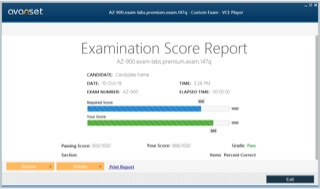
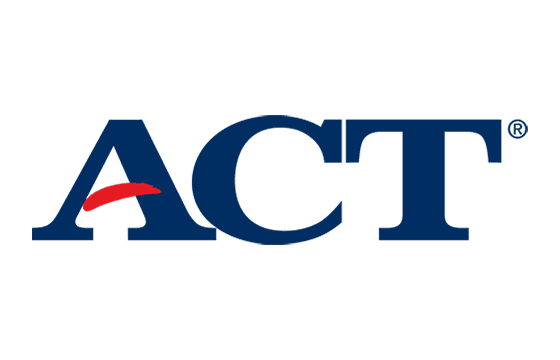
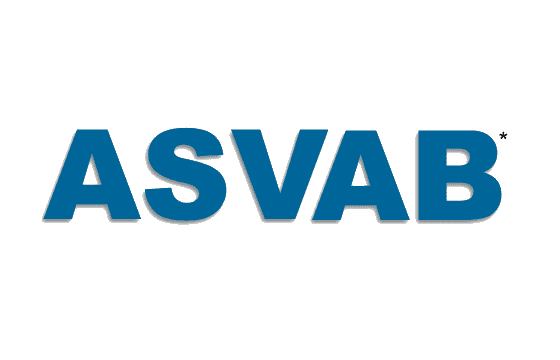





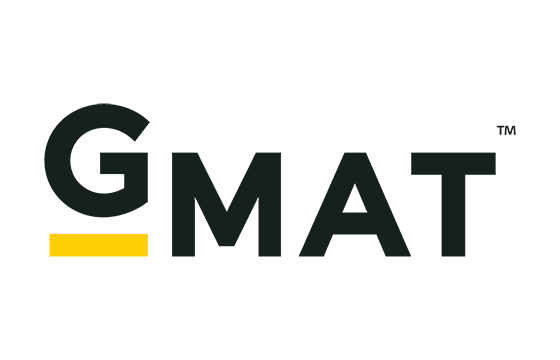

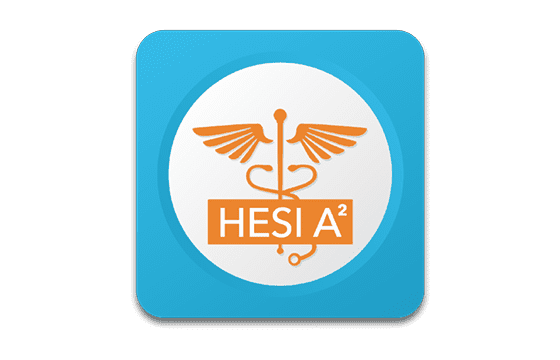




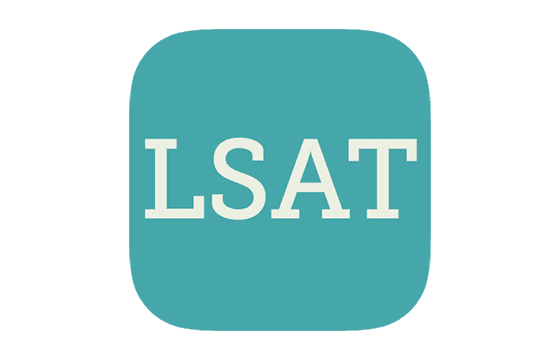


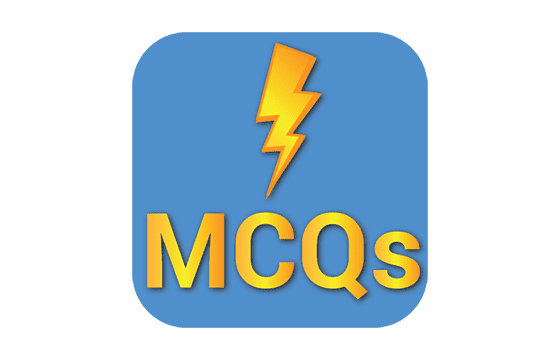

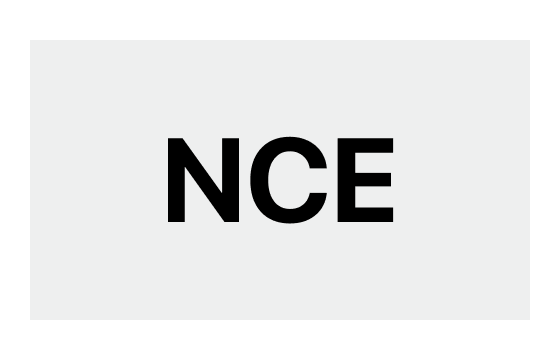
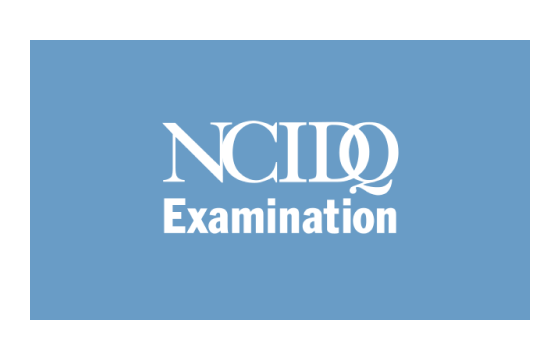




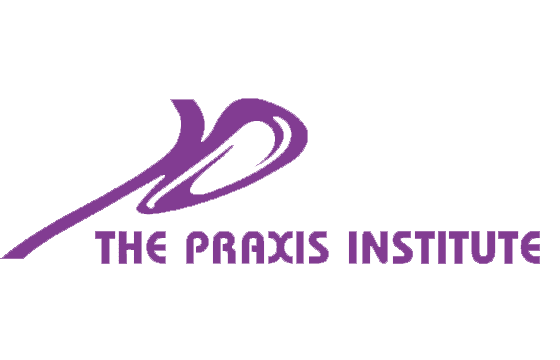

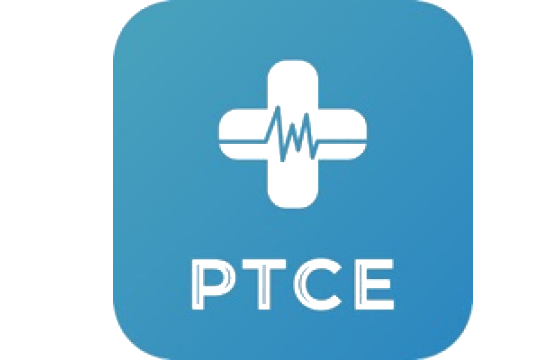
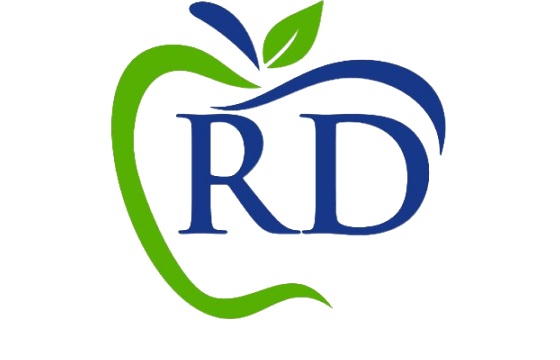

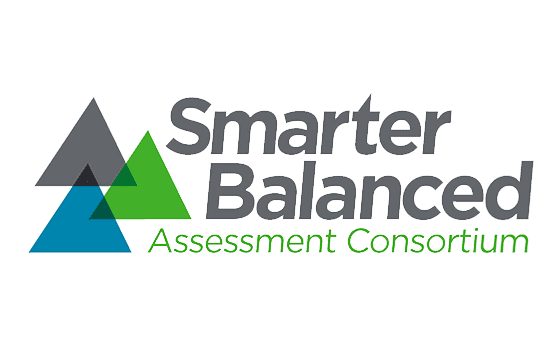



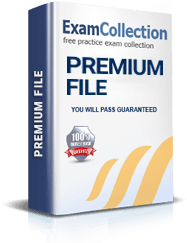

Looking for the AFOQT
I’m looking for exam for Fac Cor level 2. Thanks